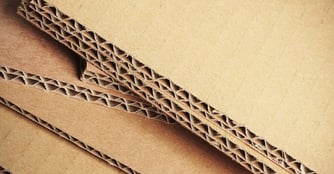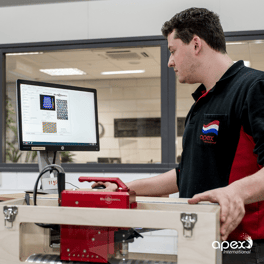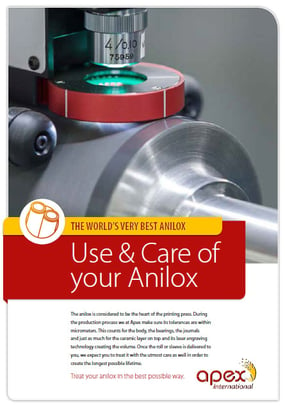Coverage issues? How to Decide if Your Anilox Needs to be Assessed
- Published: March 15, 2023

To get to the root cause of poor coverage issues, you need to ask a few questions. Here are the three common questions to help ensure there are no problems with your printing. Use this as a guide to determine the best way to fix your coverage issue.
Is the Linerboard Heavily Recycled?
Over the years many production managers in the corrugated, converting, and printing industry have struggled to get solid coverage on kraft linerboard. If the linerboard is heavily recycled, we know why they have coverage issues. Most recycled linerboard don't have the fiber content to receive the ink. As a result of the recycling process, there’s less usable fiber to absorb the ink so the ink doesn’t transfer onto the board the same way, which results in poor coverage.
To achieve the desired coverage on recycled linerboard, you need to use a soft durometer printing plate mounted on cushion backing material. A soft durometer printing plate helps transfer the ink to the linerboard. In addition, it gives the operator the control of squeeze/impression to the board. All the major plate manufactures make a low durometer plate material to compensate for the recycled board.

Are the Coverage Issues on Both Ends of the Sheet When Printing a Larger Sheet?
If the answer to this question is yes, the problem is usually that the feed roll is worn out in the middle. For the operator to get the board to feed squarely into the press, they must increase the feed roll pressure to pick up the sheet in the middle and feed it into the machine.
The effect on the board is that the sides of the board will be crushed and lower than the center of the board. This causes missing printing and less transfer coverage on the ends because the board is now a different thickness/caliber than the middle. It is advisable to check the feed roll regularly as part of a preventative maintenance program.

Have Your Anilox Rolls Been Assessed Recently?
If you still have issues of poor/inconsistent coverage, your anilox may be worn or dirty. Apex International should be your next call. We can schedule an audit and assessment of your rollers. This will determine the current volume, if the roll is just dirty and needs a laser cleaning, or if it’s worn out and needs replacing.
Anilox rolls are the heart of the flexo printing press. They contain millions of tiny cells; therefore, a good cleaning and housekeeping plan should be adopted to maintain their performance.
The following two steps will help keep your anilox rollers in their best condition:
- Keep metal objects away from inside the press so they don’t damage the anilox rolls. This includes grommets on the plate backing material, metal from the plate straps, and die board bolts from being left on frame tops that will fall off and go through the press damaging the anilox rolls.
- Ensure you have the correct daily and periodical cleaning program in place.
We have the experience and are willing to help in any way we can. If you’re having printing issues – contact our team today!
We developed a Use & Care Guide with detailed advice. Do you want one for free? Download the guide here below!




